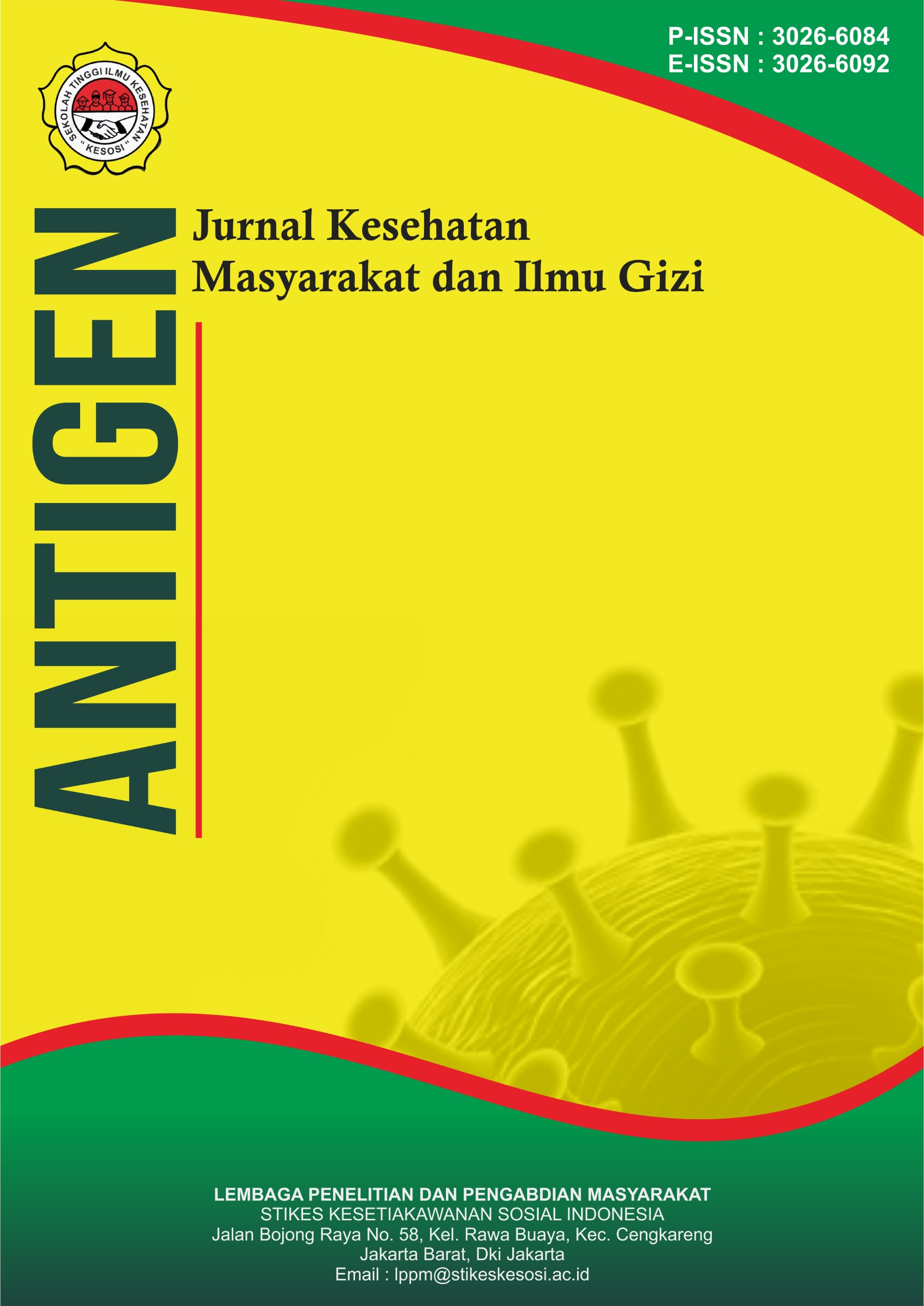Aktivitas Antidiabetes pada Fitokimia Cinnamaldehyde dalam Menurunkan Kadar Glukosa Darah Puasa, HbA1c, HOMA-IR, dan Meningkatkan Kadar Insulin Hewan Coba Tikus
DOI:
https://doi.org/10.57213/antigen.v3i3.737Keywords:
Blood glucose, Cinnamaldehyde, Diabetes mellitusAbstract
Diabetes mellitus is a metabolic disorder characterized by high blood sugar levels continuously. Insulin resistance is the main cause of type 2 diabetes mellitus, so it is very important to control it to maintain blood sugar levels. Traditional ingredients have long been used to treat diabetes. One of the traditional ingredients used is cinnamon which has been proven to have a potential effect on the management of type 2 diabetes mellitus. The content of cinnamon that has an antidiabetic effect is cinnamaldehyde which provides a distinctive taste and aroma. The method used is by analyzing journals that meet the inclusion and exclusion criteria. Articles were searched for in the search media PubMed, Science Direct, and Google Scholar. The results of analyzing the articles found were a decrease in blood glucose levels, HbA1c, HOMA-IR, and an increase in insulin levels between the blood glucose of the control group of experimental animals and the blood glucose of the group that received cinnamaldehyde intervention. The conclusion of this study is that cinnamaldehyde intervention can reduce blood glucose levels, HbA1C, HOMA-IR and increase insulin levels in the blood.
References
Banday, M. Z., Sameer, A. S., & Nissar, S. (2020). Pathophysiology of diabetes: An overview. Avicenna Journal of Medicine, 10(4), 174–188.
Camacho, S., Michlig, S., de Senarclens-Bezençon, C., Meylan, J., Meystre, J., Pezzoli, M., ... & Le Coutre, J. (2015). Anti-obesity and anti-hyperglycemic effects of cinnamaldehyde via altered ghrelin secretion and functional impact on food intake and gastric emptying. Scientific Reports, 5(1), 7919.
Galicia-Garcia, U., Benito-Vicente, A., Jebari, S., Larrea-Sebal, A., Siddiqi, H., Uribe, K. B., ... & Martín, C. (2020). Pathophysiology of type 2 diabetes mellitus. International Journal of Molecular Sciences, 21(17), 6275.
Ghazal, N. A., Agamia, Y. T., Meky, B. K., Assem, N. M., Abdel-Rehim, W. M., & Shaker, S. A. (2024). Cinnamaldehyde ameliorates STZ-induced diabetes through modulation of autophagic process in adipocyte and hepatic tissues on rats. Scientific Reports, 14(1), 10053.
Guo, X., Sun, W., Huang, L., Wu, L., Hou, Y., Qin, L., & Liu, T. (2017). Effect of cinnamaldehyde on glucose metabolism and vessel function. Medical Science Monitor: International Medical Journal of Experimental and Clinical Research, 23, 3844.
International Diabetes Federation. (2021). Diabetes in Indonesia. https://idf.org/our-network/regions-and-members/western-pacific/members/indonesia/
Masoodian, S. M., Omidifar, A., Moradkhani, S., Asiabanha, M., & Khoshmirsafa, M. (2023). HOMA-IR mean values in healthy individuals: A population-based study in Iranian subjects. Journal of Diabetes & Metabolic Disorders, 22(1), 219–224.
Naghiaee, Y., Vakili, M., Mohammadi, M., Mohiti, A., & Mohiti-Ardakani, J. (2021). Comparing the effect of cinnamaldehyde and metformin on expression of MiR-320 and MiR-26b in insulin-resistant 3T3L1 adipocytes. Phytomedicine Plus, 1(4), 100122.
Nikzamir, A., Palangi, A., Kheirollaha, A., Tabar, H., Malakaskar, A., Shahbazian, H., & Fathi, M. (2014). Expression of glucose transporter 4 (GLUT4) is increased by cinnamaldehyde in C2C12 mouse muscle cells. Iranian Red Crescent Medical Journal, 16(2).
Rachid, A. P., Moncada, M., Mesquita, M. F. D., Brito, J., Bernardo, M. A., & Silva, M. L. (2022). Effect of aqueous cinnamon extract on the postprandial glycemia levels in patients with type 2 diabetes mellitus: A randomized controlled trial. Nutrients, 14(8), 1576.
Ranasinghe, P., Perera, S., Gunatilake, M., Abeywardene, E., Gunapala, N., Premakumara, S., ... & Katulanda, P. (2012). Effects of Cinnamomum zeylanicum (Ceylon cinnamon) on blood glucose and lipids in a diabetic and healthy rat model. Pharmacognosy Research, 4(2), 73.
Rashwan, A. S., El-Beltagy, M. A., Saleh, S. Y., & Ibrahim, I. A. (2019). Potential role of cinnamaldehyde and costunolide to counteract metabolic syndrome induced by excessive fructose consumption. Beni-Suef University Journal of Basic and Applied Sciences, 8, 1–8.
Zhang, W., Xu, Y. C., Guo, F. J., Ye, M., & Li, M. L. (2008). Anti-diabetic effects of cinnamaldehyde and berberine and their impacts on retinol-binding protein 4 expression in rats with type 2 diabetes mellitus. Chinese Medical Journal, 121(21), 2124–2128.
Downloads
Published
Issue
Section
License
Copyright (c) 2025 Antigen : Jurnal Kesehatan Masyarakat dan Ilmu Gizi

This work is licensed under a Creative Commons Attribution-ShareAlike 4.0 International License.






